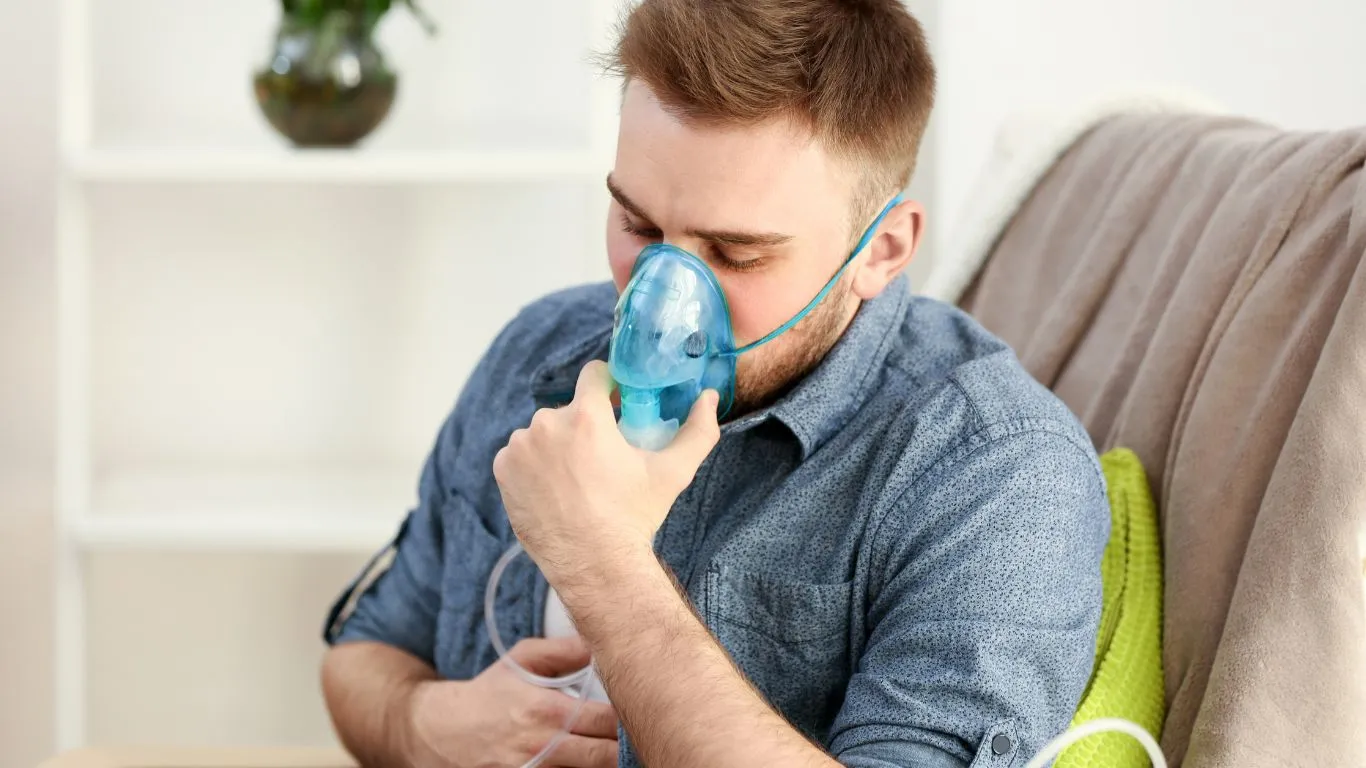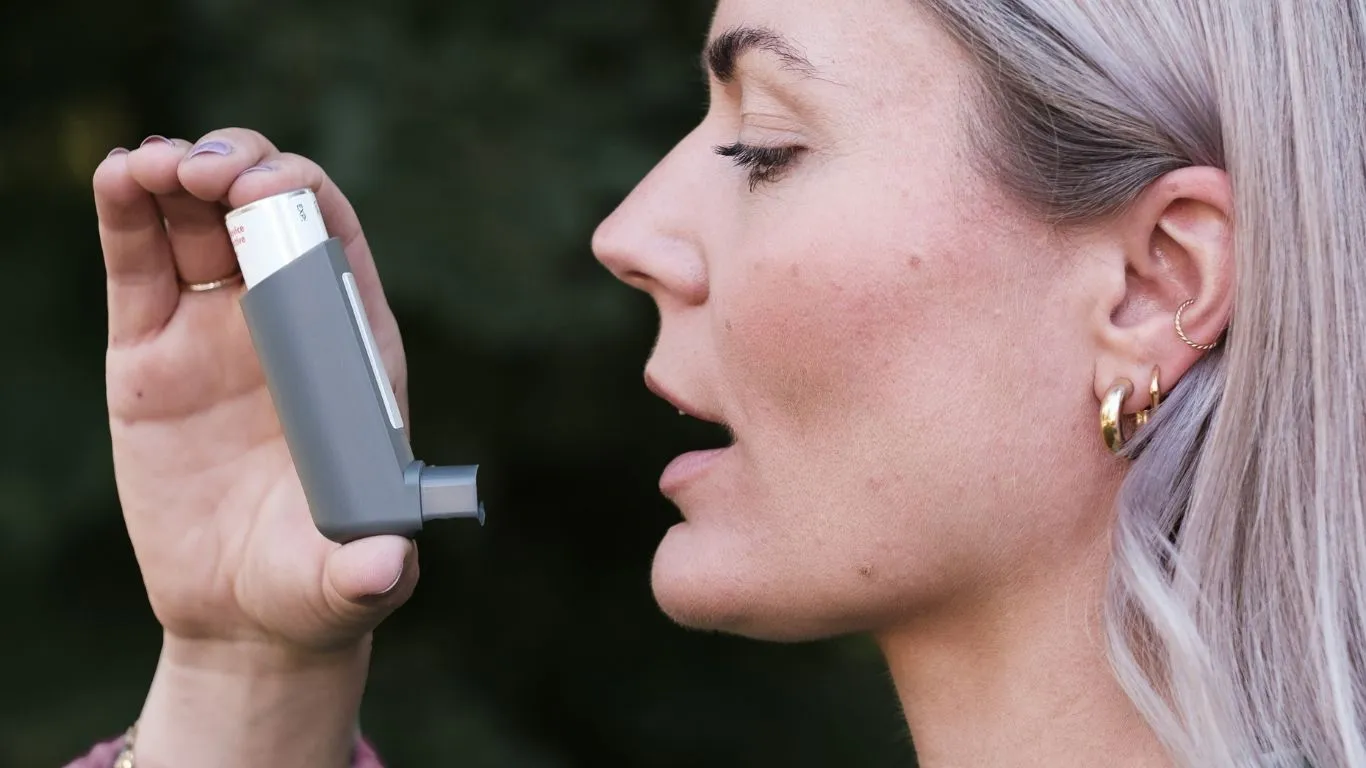Asthma Symptoms Without Wheezing: Discover Effective Management Tips
As a Pulmonary Nurse, I’ve encountered countless cases of asthma over the years, and one thing that always stands out is how different the symptoms can be for each patient. Asthma is often associated with wheezing – that high-pitched, musical sound you hear when someone has difficulty breathing. However, there are many people who suffer from asthma symptoms without wheezing. This can make it harder to diagnose, and patients may not even realize they have asthma until more serious issues arise.
If you or someone you know is experiencing symptoms like shortness of breath, chest tightness, or coughing, but without the classic wheezing sound, it’s crucial to pay attention to these signs and understand how asthma can manifest differently for each individual.
Understanding Asthma: Beyond the Wheezing
When most people think of asthma, they immediately think of the sound of wheezing, a hallmark sign of this chronic condition. While wheezing is common, it’s far from the only symptom of asthma. Many individuals experience asthma symptoms without wheezing, which can make diagnosis trickier and delay proper treatment. So, if you’re not wheezing but still experiencing respiratory issues, don’t ignore it. Let’s take a closer look at what asthma symptoms without wheezing might look like.

What Are the Symptoms of Asthma Without Wheezing?
Even without the telltale wheezing, asthma can still cause significant discomfort and affect your quality of life. Some of the most common symptoms of asthma without wheezing include:
- Shortness of Breath: This is often the first sign that something isn’t quite right. People with asthma may feel like they can’t catch their breath, especially during physical activity or at night.
- Chest Tightness: A feeling of pressure or tightness in the chest is another common symptom. It may feel as though something is squeezing your chest, making it hard to breathe deeply.
- Coughing: Persistent coughing, particularly at night or early in the morning, can be a key symptom of asthma. It’s often dry, hacking, and sometimes accompanied by mucus production.
- Fatigue: When asthma symptoms are left unchecked, the body has to work harder to breathe, which can lead to feeling more tired than usual.
- Difficulty Sleeping: Asthma can worsen at night, making it difficult to get a good night’s sleep. You may wake up frequently due to shortness of breath or coughing.
How Can Asthma Be Misdiagnosed Without Wheezing?
Many people with asthma symptoms without wheezing may be misdiagnosed because the condition doesn’t fit the stereotypical image of asthma. Doctors may initially think the symptoms are due to other conditions, such as allergies, viral infections, or even anxiety. However, the absence of wheezing doesn’t mean that asthma isn’t the underlying issue. In fact, it can sometimes be an indication of a different type of asthma, such as cough-variant asthma, where the primary symptom is persistent coughing rather than wheezing.
In my experience, patients with asthma without wheezing often visit multiple healthcare providers before getting a proper diagnosis. It’s easy for doctors to attribute the symptoms to something less serious, especially if wheezing is absent. But when the patient’s symptoms persist or worsen, a more thorough examination and possibly some testing are necessary. Pulmonary function tests, such as spirometry, can help confirm the diagnosis of asthma, even if wheezing is not present.
Why is It Important to Identify Asthma Symptoms Without Wheezing?
Identifying asthma symptoms early is crucial to preventing long-term damage to the lungs and improving quality of life. When asthma goes undiagnosed or untreated, it can lead to more frequent flare-ups, increased hospital visits, and even permanent lung damage. As someone who’s worked closely with asthma patients, I’ve seen firsthand how early intervention can make a significant difference. Proper treatment can help control symptoms, reduce the frequency of attacks, and improve lung function.
If you or someone you know is experiencing asthma symptoms without wheezing, it’s essential to seek medical attention promptly. Early diagnosis and treatment can help prevent asthma from worsening and improve overall respiratory health. Whether you experience shortness of breath, chest tightness, coughing, or fatigue, don’t wait for wheezing to show up before you take action. Asthma can be managed effectively with the right approach, and you don’t have to live in fear of it getting worse.
The Role of Lifestyle Changes in Managing Asthma Without Wheezing

Managing asthma is about more than just medications. While inhalers and other treatments play an essential role, lifestyle changes can also make a huge difference in controlling symptoms, even if you don’t have the typical wheezing associated with the condition. Here are some lifestyle changes that can help manage asthma symptoms without wheezing:
- Avoid Triggers: Environmental factors like dust, mold, pollen, and smoke can trigger asthma symptoms. Identifying and avoiding your specific triggers can significantly reduce the frequency and severity of asthma attacks.
- Exercise Regularly: Regular physical activity can strengthen the lungs and improve overall respiratory health. However, it’s important to consult with your doctor about the best exercise routine for your asthma. Some people find that certain activities, like swimming, are particularly beneficial for their lungs.
- Maintain a Healthy Diet: Eating a balanced diet rich in fruits, vegetables, and omega-3 fatty acids can help reduce inflammation in the body, which may improve asthma symptoms. Maintaining a healthy weight is also important, as excess weight can exacerbate asthma symptoms.
- Monitor Air Quality: Poor air quality can trigger asthma symptoms. Keeping an eye on air pollution levels and staying indoors during high pollution days can help prevent flare-ups.
- Manage Stress: Stress and anxiety can worsen asthma symptoms, even without wheezing. Finding ways to manage stress, such as meditation, yoga, or simply taking time to relax, can be an important part of asthma management.
Asthma Medication Options
When lifestyle changes aren’t enough to manage asthma symptoms, medications can play a vital role. Inhalers, corticosteroids, and bronchodilators are commonly prescribed to control asthma. Some of these medications help prevent inflammation, while others help open up the airways during an asthma attack. It’s important to work closely with your doctor to find the right medication regimen that works for your symptoms, even if you’re not experiencing the typical wheezing. With the right treatment plan, most people with asthma can lead normal, active lives.

How Asthma Without Wheezing Affects Daily Life
Living with asthma symptoms without wheezing can be incredibly frustrating. You might feel like you’re constantly dealing with shortness of breath, chest tightness, or that nagging cough, but without the classic wheezing that people often associate with asthma, it can be hard to get the right diagnosis and treatment. I’ve spoken to many patients who’ve felt this way, not understanding why their body is betraying them but not having the obvious signs that others associate with asthma. It’s a silent struggle that can affect every part of your life, from work to social activities to even just breathing easy when you’re relaxing at home.

The Impact on Physical Activity
One of the biggest challenges for people experiencing asthma without wheezing is dealing with the physical limitations. When you don’t have the typical wheezy sounds, it can be easy to overlook how much harder your body is working to get air. Whether it’s walking up a flight of stairs, exercising, or just trying to catch your breath after light activity, asthma symptoms without wheezing can leave you feeling winded and fatigued. I’ve seen so many patients who are reluctant to admit they’re struggling because they don’t have the same symptoms they associate with asthma. This can lead to frustration and even avoidance of physical activity, which is only counterproductive.
In my experience, it’s essential to not ignore these signs. Asthma affects everyone differently, and you may need to adjust your physical activities or take breaks more frequently. Some people find that low-impact exercises like swimming, yoga, or walking help them manage symptoms better. If you’re experiencing shortness of breath without wheezing, be kind to your body, and don’t push yourself too hard, too quickly.
Difficulty with Sleep
Another issue that many people with asthma without wheezing face is trouble sleeping. Asthma symptoms tend to worsen at night, and without the obvious wheezing, it might be difficult to identify why you’re waking up in the middle of the night feeling short of breath. If you’ve ever woken up gasping for air or feeling tight in your chest, you know how unsettling it can be. I’ve had patients express how they wake up multiple times throughout the night and feel exhausted in the morning, but they don’t think it’s asthma because there’s no wheezing sound to accompany it.
This pattern of disrupted sleep can affect every area of life. Lack of sleep leads to fatigue, irritability, difficulty concentrating, and even weakened immune function. I always recommend that anyone with asthma, especially those without wheezing, consider tracking their symptoms at night. It might help pinpoint triggers or patterns that you can address with the help of a healthcare provider. Adjusting your sleep environment—keeping the room cool and free from allergens, using a humidifier, or even sleeping in an elevated position—can sometimes alleviate these nighttime symptoms.
When to Seek Medical Attention for Asthma Symptoms
Even if you’re experiencing asthma symptoms without wheezing, it’s important to seek medical advice as soon as possible. Asthma that’s not properly managed can become more severe and lead to complications. I’ve worked with numerous patients who delayed seeing a doctor because they didn’t have the typical asthma symptoms they thought they should have. But asthma is sneaky. It can creep up on you, and if left untreated, it can lead to more serious issues like permanent airway damage or frequent flare-ups that require hospitalization.
If you notice that you’re struggling with breathing, feeling constantly fatigued, or your symptoms are interfering with your daily life—even without the characteristic wheeze—it’s time to see a healthcare professional. You don’t have to wait until the situation worsens. Early intervention is key. The sooner you address asthma, the better your chances are for long-term management and a more comfortable life.
What Happens During a Diagnosis?
Getting an asthma diagnosis without wheezing often involves more than just listening to the lungs with a stethoscope. Your doctor may need to perform several tests to assess your lung function, such as a spirometry test or an asthma challenge test. These tests help determine how well your lungs are working and how they respond to certain triggers. In my experience, many of my patients have been surprised by how easy these tests are, and how much information they provide for creating an effective treatment plan.
In some cases, your doctor might also take a detailed medical history, looking for patterns in your symptoms. If there’s a family history of asthma or allergies, this can provide additional insight. It’s also a good idea to track your symptoms yourself. Keeping a journal of when symptoms appear, what triggers them, and how long they last can help your doctor make a more accurate diagnosis.

Treatment Options: What You Need to Know
Once you’ve been diagnosed with asthma, your doctor will work with you to find a treatment plan that’s right for your symptoms. Even if you don’t have wheezing, asthma can still be managed effectively with medications and lifestyle adjustments. Inhalers are commonly used to help open the airways during an attack, while long-term control medications like corticosteroids help reduce inflammation in the airways and prevent flare-ups.
I’ve seen many patients respond well to inhaled corticosteroids, which help keep asthma symptoms at bay by reducing inflammation. However, every patient is different, and your doctor may try a combination of medications to find the best solution for your specific symptoms. If you’re not experiencing wheezing, but you’re having difficulty catching your breath or dealing with chest tightness, don’t hesitate to talk to your healthcare provider about adjusting your medication or treatment plan.
Additionally, for those who find that medications alone aren’t enough, a pulmonary rehabilitation program can help improve lung function and overall fitness. These programs typically involve breathing exercises, education about managing asthma, and physical activities designed to improve stamina and endurance.
Living with Asthma Without Wheezing: Tips for a Healthier Lifestyle

Living with asthma without wheezing doesn’t have to mean you can’t live an active and fulfilling life. It’s all about learning how to manage your symptoms effectively and making the right lifestyle adjustments. Here are some tips that might help:
- Monitor Your Symptoms: Keep a close eye on your symptoms. If you’re feeling more short of breath or fatigued than usual, take note and share this with your healthcare provider. You don’t have to wait for wheezing to show up before seeking help.
- Stay Hydrated: Drinking plenty of water can help keep your airways moist, which might help ease some of the discomfort you experience with asthma. Plus, it helps flush toxins from your body, which is always a good thing.
- Stick to Your Medication Schedule: Even if you’re not having an asthma attack, staying on top of your medications is key to preventing flare-ups. Missing doses can lead to uncontrolled symptoms down the line.
- Reduce Stress: Stress is a known asthma trigger, so finding ways to manage stress through relaxation techniques, like deep breathing or mindfulness, can be incredibly helpful.
- Check Your Home Environment: Dust, pet dander, mold, and other allergens can exacerbate asthma symptoms. Keeping your home clean and allergen-free can go a long way in preventing flare-ups.
Living a Full Life with Asthma Without Wheezing
When you’re living with asthma symptoms without the classic wheezing, it’s easy to feel like you’re missing something—like you don’t quite belong in the “asthma club” because you’re not dealing with the wheezing everyone associates with the condition. But the truth is, asthma is a highly individualized disease, and it can show up in many different forms. As someone who’s worked with asthma patients for years, I can tell you that living with asthma, even without wheezing, is entirely possible. It just takes the right mindset and the right management strategies.

Embracing a Positive Outlook
One of the most important aspects of living with asthma is adopting a positive mindset. I’ve seen so many patients who were initially overwhelmed by their diagnosis but later came to understand that asthma doesn’t have to control their life. With proper management, you can still live an active, fulfilling life. If you’re experiencing asthma symptoms without wheezing, it might seem less serious, but it’s still important to take it seriously and get the right treatment. Don’t let asthma define you. Take control of your health, and don’t let it hold you back.
In my own practice, I’ve witnessed firsthand the power of a positive attitude. Patients who embrace their diagnosis and work with their doctors on a customized treatment plan tend to fare much better than those who feel defeated. Whether you’re dealing with shortness of breath or a persistent cough, remember that there are treatments, lifestyle changes, and strategies that can help you lead a fulfilling life, even with asthma. There’s no reason to let asthma, even without the wheezing, keep you from achieving your goals and dreams.
Ongoing Monitoring and Communication with Your Doctor
While asthma without wheezing might seem like a mild form of the condition, it’s still essential to keep track of your symptoms and stay in regular communication with your healthcare provider. I can’t stress enough how important it is to monitor changes in your breathing, even if you’re not hearing that familiar wheeze. In fact, it’s even more important to keep your doctor informed about any new or worsening symptoms, as this can help adjust your treatment plan before things get more serious.
Having regular check-ins with your doctor ensures that your asthma treatment remains on track. It might be tempting to ignore symptoms that don’t seem as severe, but don’t make that mistake. The more information your doctor has about how you’re feeling and what symptoms you’re experiencing, the better they can tailor your treatment. If your symptoms become more frequent or intense, it could mean that adjustments need to be made in your medication or lifestyle plan.
Prevention is Key: Identifying Triggers
Another crucial aspect of managing asthma without wheezing is identifying and avoiding triggers. Asthma triggers vary from person to person, and they can be environmental, emotional, or physical. It’s important to take note of when and where your symptoms flare up. For instance, do you notice shortness of breath when you’re near pets? Are you more likely to experience symptoms in certain weather conditions? These triggers can be key to managing your asthma symptoms more effectively.
Common asthma triggers include allergens (dust mites, pollen, mold), air pollution, strong odors, smoke, cold air, and respiratory infections. In my experience, a thorough assessment of environmental and lifestyle factors is an essential part of any treatment plan. For example, if cold air is a trigger for you, wearing a scarf over your nose and mouth during colder months can help warm the air before it enters your lungs. Similarly, if allergens are a concern, maintaining a clean home environment with regular cleaning and using air purifiers can help reduce exposure to triggers.
The Importance of a Healthy Lifestyle
Adopting a healthy lifestyle can go a long way in managing asthma symptoms. Even without wheezing, your lungs need extra care to stay healthy. Regular exercise can help keep your lungs strong and improve overall cardiovascular health. I always recommend that my patients engage in physical activity that’s gentle on the body, such as walking, swimming, or biking. If you have asthma, it’s essential to work with your doctor to create an exercise plan that won’t put too much strain on your lungs.
Another lifestyle change to consider is diet. A healthy, well-balanced diet rich in fruits, vegetables, and whole grains can help reduce inflammation and support lung health. Foods that are high in antioxidants, such as berries, and those rich in omega-3 fatty acids, like fish, can also help reduce the inflammation associated with asthma. In my own experience, when patients take their diet seriously and make mindful food choices, they often see improvement in their asthma symptoms.

Breathing Exercises for Asthma Control
Breathing exercises are another excellent way to help manage asthma symptoms, especially if you’re dealing with asthma without wheezing. Techniques such as diaphragmatic breathing and pursed-lip breathing can help you control your breath and reduce feelings of shortness of breath. These exercises are easy to do and can be done anywhere. In fact, I’ve encouraged many of my patients to practice these exercises regularly, and they’ve reported feeling more in control of their symptoms as a result.
Diaphragmatic breathing, or “belly breathing,” helps strengthen the diaphragm and allows you to take deeper breaths. This can be especially helpful when you’re feeling short of breath. Pursed-lip breathing, where you inhale slowly through your nose and exhale through pursed lips, helps slow your breathing and ensures that you’re fully expelling air from your lungs. Both techniques can be incredibly useful tools for managing asthma and improving lung function.
Disclaimer
It’s important to remember that while the information in this article is based on my experience as a Pulmonary Nurse, it is not a substitute for professional medical advice. Always consult with your healthcare provider before making any changes to your asthma treatment or lifestyle. Asthma is a serious medical condition, and only a healthcare professional can provide an accurate diagnosis and treatment plan tailored to your individual needs. For more information on asthma management, visit trusted resources such as Health.com and National Institutes of Health.

Bianca Nala is a compassionate Nurse Practitioner with a strong background in primary and respiratory care. As a health writer for Healthusias.com, she combines her clinical expertise with a talent for clear, relatable storytelling to help readers better understand their health. Bianca focuses on topics like asthma, COPD, chronic cough, and overall lung health, aiming to simplify complex medical topics without losing accuracy. Whether she’s treating patients or writing articles, Bianca is driven by a single goal: making quality healthcare knowledge accessible to everyone.






